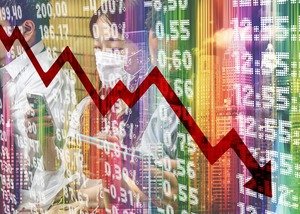
There are various theories and policies around the world which are expected to bring relief, yet we still suffer from massive global poverty . This is because we have not been able to satisfactorily able to identify a problem and its cause, so not able to answer: “what works ?”. Nobel Laurate Angus Deaton correctly emphasises on the importance of measurement as a tool to reduce global poverty [1]. The economists Abhijeet Banerjee , Duflo and Krenmer have contributed significantly in answering this question. The fundamental contribution of Banerjee, Duflo and Kremer was to develop an experimental approach to developmental economics. They built a scientific framework and used hard data to identify causes of poverty, estimate the effects of different policies and then evaluate their cost effectiveness. Specifically, they developed randomised control trials (RCTs) to do this. They used these to study different policies in action and to promote those that were most effective [2].
In a landmark study, Duflo, with Banerjee and Rachel Glennerster discovered that the rate at which families in northern India will immunise their children jumps from about 5% to nearly 40% when parents are offered a small bag of lentils as an incentive and at the same time decreased the malnutrition rate [3] .
Since 2003, more than 235 evaluations have been carried out in 38 different countries, examining unemployment, absenteeism in education, social programmes and other issues. Many of the evaluations are long-term studies, lasting up to three years or more. In Kenya, for instance, J-PAL’s researchers found that school absenteeism was linked to intestinal worms. When de-worming pills were administered to children, researchers found absenteeism was reduced by 25% . [4]
Singaporian public policies have always been strongly guided by the rigour of economic logic. But what is less well known is that policies have been shaped also by considerations of people’s likely responses and reactions which may not be consistent with economic logic. It was a pragmatic approach of learning from mistakes, of developing an intuition for how people will respond and continually adjusting policies in the light of experience.
Singapore so employed experimental and empirical way of viewing the economy and thus creating policies that bring about an effective change. Getting prices right, using financial incentives, making choices transparent and letting the market work are key ingredients of this approach. Economic rationality by way of keeping citizen at the centre, has generally served the country well.
For example : Singaporian developmental economists conducted several researches to come to the conclusion that people often tend to choose the default option. Most people intuitively understand the importance of health insurance but never get round to buying a policy. If MediShield, the insurance programme for catastrophic illness offered through the Central Provident Fund, had been an opt-in scheme, people’s inertia and status quo bias might have resulted in a low take-up. Understanding this, the government introduced MediShield as an opt- out scheme. This helped ensure a high participation rate without taking away people’s choice. Similarly, participation in organ donation was established as the default for Singaporeans over 21 years of age and of sound mind unless they explicitly opted out. Few Singaporeans chose to opt out. Kidney donations by the deceased rose by about nine times following the passage of the legislation on organ donation – a socially good outcome that was achieved, again without taking away people’s choice.
The need to incorporate experimental and behavioural economics in shaping public policies can be also be felt during this Covid crisis , more than ever. The present situation is not only a health crisis but a human crisis; a jobs crisis; a humanitarian crisis and a development crisis. And it is not just about the most vulnerable. This pandemic shows that we all are at risk because we are only as strong as the weakest and the most vulnerable on this globe. Its unprecedented scale demands an unprecedented response. COVID-19 has created a record levels of deprivation and unemployment, creating an unprecedented human crisis that is hitting the poorest hardest, especially women and children. The novel corona virus infused pandemic has spread in more than 140 countries, the number of people catching the virus increasing exponentially. As the health and human toll grows, the economic damage is already evident and represents the largest economic shock the world has experienced in decades. COVID-19 threatens to become one of the most difficult tests faced by humanity in modern history. As the pandemic has spread it has taken lives, stirred anxiety and administrative callousness, overwhelmed healthcare infrastructure, and triggered potentially lasting geopolitical changes. The June 2020 Global Economic Prospects describes both the immediate and near-term outlook for the impact of the pandemic and the long-term damage it has dealt to prospects for growth. The baseline forecast envisions a 5.2 percent contraction in global GDP in 2020, the deepest global recession in decades, despite the extraordinary efforts of governments to counter the downturn with fiscal and monetary policy support. Over the longer horizon, the deep recessions triggered by the pandemic are expected to leave lasting scars through lower investment, an erosion of human capital through lost work and schooling, and fragmentation of global trade and supply linkages. Public officials and companies walk a fine line as they attempt to reopen economies. COVID-19 has hit the poorest the hardest and has had the most devastating effect on the under developed and the developing countries. For such emerging market and developing countries, many of which face daunting vulnerabilities, it is critical to strengthen public health systems, address the challenges posed by informality, and implement reforms that will support strong and sustainable growth once the health crisis abates.
At the same time Oxfam International has warned that half a billion additional people worldwide could be pushed into poverty as a result of the present unfolding crisis. COVID-19 outbreak presents an unprecedented challenge to us all. It is a complex, fast-evolving situation for which there is no blueprint. Due to the collapse of commodity prices, trade, investment and remittances have been exacerbated by the severe disruptions caused by lockdowns, incomes have collapsed and people face acute hunger.
The crisis highlights the need for urgent action to cushion the pandemic’s health and economic consequences, protect vulnerable populations, and set the stage for a lasting recover. As such, governments around the world are reaching for more agile, iterative approaches that seek to rapidly learn and evolve more successful strategies over time. Thus it is the most appropriate problem for experimental economist to solve on Realtime fast evolving data.
In this context as a socio-economic benchmark, the Sustainable Development Agenda 2030 provides us with a compass. The design principles derived from this agenda emphasises that in our highly networked world, human well-being and an intact environment depend on the ability to take action across sectors and national borders, and with a view to meeting the needs of the present without comprising the ability of future generations to meet their own needs. It thus evolves ahollistif approach inter-linking economic growth, social inclusion and environmental sustainability. As SDGs had a strong action oriented agenda where the Global economy had to come together as a n inter-linked network so turning the clock back on globalization is not a realistic option. On the contrary, we must address the many links between the 17 sustainability objectives and at the same time shape the contradictions and synergies between sectors such as healthcare, the economy, food and energy systems, so that the urgently needed transformation towards a more resilient world can be initiated. The COVID-19 crisis though has shone a harsh spotlight on a range of development challenges, however the choices the world makes now in its path to recovery will shape the trajectory of sustainable development for years to come. A key objective at present is to restore economic activity without simply restoring the old patterns of environmental degradation. The SDGs and the Six SDG Transformations should guide the recovery from Covid-19 and help build back better. No country will be safe from the pandemic unless all countries bring the virus under control.
Behavioral economics also comes into play in such a scenario as fear is a key human emotion, governing various choices and decisions that we make. It could be as basic as, giving masks or sanitizers while distributing grains , taking cue from Duflo and Banerjee’s work. The grains would incentivize them to collect the masks and sanitizers and bring them to use, hence mitigating the spread of the virus , while also satiating their hunger during these times of no or very little work . About 90% of India’s workforce is informally employed, which includes gig economy workers. This population is extremely vulnerable to economic shocks and needs greater access to formal credit and social safety nets such as insurance and pension schemes. Beyond employment guarantees, a universal basic income – broader then current schemes that are conditional upon occupation and land ownership – can help provide vital resources for subsistence, or for investing in education and health. Greater access to bank accounts for the 20% of adults without one, per 2017 data, would help efficiently deliver this income to households. Lastly, it is critically important to expand access to clean water, clean air and primary health care. These will improve life expectancy and increase economic and physical resilience.
Similar knowledge of behavioral and experimental economics can also be applied at a larger scale as a helping tool to tackle the situation of migrant workers. These times of uncertainty, brought both the fear of catching the virus and financial stress to the large migrant population of India .E loss of economic output is large across all economies . Generalizing , we have 20-25% loss of GDP and a matching amount of unemployment. The larger the informal, less mechanized sector, the bigger the proportion of job loss to the loss of revenue. This raises a fundamental question. In what ways does covid differ from the other crisis so as to have such a sharp and sudden effect ? A simple clue says that only the shape of the recovery will tell ups the nature of the downward effect. If the recovery is V-shaped , then we will know the economy is a contact business, in which , economy can carry out its processes in close proximity . Distancing costs . Point of saying this is that traditionally economists have theorized in terms of individual behavior, consuming, supplying labour, migration, etc. What Covid has taught us is that consumption is a joint activity as is buying and selling. We have tried online selling and buying, and online working. But, these activities have proven poor substitutes. Consumer expenditure has been down in all economies, not just for those who have lost income because their work involved social proximity, but even the salaried who worked from home have consumed less and saved more .Normally, recovery from recessions relies on the return of confidence, reduction in interest rates or tax rates or Keynesian spending. This time, Keynesian spending has at best cushioned the income shock as the economy has gone down. In the face of this disquieting outlook, the immediate priority for policymakers is to address the health crisis and contain the short-term economic damage. Over the longer term, authorities need to undertake comprehensive reform programs to improve the fundamental drivers of economic growth once the crisis lifts. Policies to rebuild both in the short and long-term entail strengthening health services and putting in place targeted stimulus measures to help reignite growth, including support for the private sector and getting money directly to people. During the mitigation period, countries should focus on sustaining economic activity with support for households, firms and essential services. In such cases , its natural for the migrant workers to be governed by emotions rather than cognitive thinking and rush back to their villages . In such a scenario it becomes essential for the government to keep them both emotionally motivated and engaged in some fruitful work that helps them earn their daily bread . This solves a dual purpose ; curbing the spread of the virus to rural india , as well as , preventing the economy from becoming completely sluggish while taking necessary precautionary measures . In England, for example, businesses such as garden centres were allowed to open in May, non-essential shops welcomed back customers from 15 June, and it was possible to get a drink in a pub or stay the night in a hotel from 4 July. Gyms, swimming pools and spas were told last week that they could soon reopen. Infrastructure investments are an effective way to boost economic activity and create jobs. But what kind of infrastructure should be built? Data from the 2008-09 financial crisis shows that South Korea, which directed nearly 70% of its stimulus towards green measures, rebounded faster than other economies in the Organisation for Economic Co-operation and Development (OECD). In the United States’ 2009 Great Recession recovery package, investments in clean energy and public transport created more jobs than traditional investments.India too should take this opportunity to increase support for renewable energy, particularly rooftop solar, through appropriate policies and business models. Decentralized solar power can help spread critical services in remote regions if the upfront capital constraints can be addressed. It should revisit the potential import duties on solar panels, since this may not increase domestic production, but may raise the cost of solar power.Similarly, scaling up electrification and public transport will be critically important to reduce traffic congestion and air pollution. This should involve closer coordination with the electricity sector and a greater focus on vehicle charging infrastructure. Continued investment in cold storage facilities and supply chains will ensure the preservation and timely delivery of agricultural produce and reduce losses to farmers. Allowing construction work with certain restrictions would help ease the migrant workers plight and the ongoing economic recession. Furthermore , this would shift the burden of ensuring the well being in terms of health of the workers , from government to the private sector involved in this economic activity and allow the government to focus its resources on battling other aspects of the pandemic . While such measures could be taken , its a fact that a considerable percentage of the migrant workers have returned to their villages . This can be seen as an economic opportunity to realise rural economic growth . The migrant workers have lived in the cities , picked up new viable skills and have become decently well versed with basic technology . Their skillset can be used to rejig the rural economy and bridge the gap between rural and urban India . For example , using their knowledge of transfer payments , logistic chains , collaborations and networking , modern digital tools , it is possible to connect rural businesses directly to the consumers and remove or reduce the interference of middle men . Covid 19 also brings with it a breakthrough towards a digital revolution . Angus deatons theory , emphasising the importance of measurement comes into play here . A large population of india is devoid of basic hardware ie in terms connectivity and access to smart devices , required to access digital platforms . It is estimated that access to digital technology is available to only 1.5 billion people around the world , which a very small chunk of the total population of 7.5 billion .The precise empirical data reflecting the extent of distribution of digital services and platforms needs to be collected in order to tackle this problem systematically. We need to promote a comprehensive, high-quality data infrastructure and collection tools for measuring the use and impacts of digital technologies at the individual and business level . Its also important to 1 promote a comprehensive, high-quality data infrastructure and collection tools for measuring the use and impacts of digital technologies at the individual and business level. However digitalization is beyond simply investing in ICT infrastructure it also about inclusion, plurality, transparency and efficiency in services, diversity and achieving gender equality. Digital Inclusion is critical for the foundations of the digital economy, and every step must be taken to address this. But prior to solving this problem it is imperative to measure the extent of problem and precise steps that need to be taken for achieving the sustainability goal of connectivity to all by 2030.
Development of a good technological network has become key to the progress of a country as companies have opted to work remotely and their employees are now online and working from home . These times of COVID-19 have brought a massive leap towards digitalisation . While these trends were already in motion. , they have now hit the fast forward button . Even the most brick and mortar organisations have been forced to experiment with digital channels . This presents a real and immediate opportunity to drive efficiencies through digital . At the same time, this crisis has highlighted the importance of investment in enabling technologies like cloud , data , and cyber security . This will change the way we work with far reaching implications on b2g , b2c , commercial real estate , e-commerce , etc . From virtual meetings to automated factories , online orders to drone delivery , digital automated services are growing in importance , permeating an increasing no. of sectors . Digitally agile firms are adapting to the crisis more successfully and others are rapidly skilling up in response . For governments looking to drive economic recovery after the pandemic , supporting such digital competitiveness will be key . One way is through foreign direct investment in digital economy or digital FDI . The next part of digitalisation is about applications that will impact livelihoods , strengthen the supply chain , accelerate various sectors and build a cyber safe world . The present situations also demands a greater collaboration among stakeholders , for providing solutions to social distancing , distributed workforce and the changing nature of global supply chain . Emerging digital technologies such as AI , blockchain , IoT etc can be efficiently leveraged , during and after this time . During the pandemic , the global supply chain has been compromised and has significantly affected businesses . Therefore , capacity enhancement of each member is important and date emerging technologies may be leveraged to support domestic businesses . Government of india also integrated digitalisation with health , effectively using technologies for dissemination of information , integration of chatbots , data collection and sharing API and GIS based dashboard for covid 19 . Apps like Aarogya Setu quarantine alert system helped to create virtual geofences , alert people and identify red zones . The common service centres in india delivered financial help , telemedicine and also assisted in date entry , validation and management to provide authentic information . Before the pandemic only 7% works had access to flexible workspace benefit , now the number has grown to 42% . While the social distancing and fear psychosis are not going away soon , companies and government will have to be digitally transformed .
Another aspect that has been highlighted in this pandemic is the emergence of a new parameter while making evidence based profitable decisions for the economy as a whole and individual businesses . Since the modern world has never experienced such a widespread health crisis , back up for a scenario where global supply chains are broken or disrupted was not kept in mind while making policies . The importance of making businesses resilient to such a situation has come to light now and is a cue for evidence based economics to take on . Also , countries that are more transparent , generally , democracies , will be favoured to be made part of this new supply chain taking note from the current crisis that involves a lot of doubts , theories and stigma around its emergence . This crisis also gives india an opportunity to become an integral part of the global supply chain by eliminating china .This also extremely important in the wake of the world speeding towards an industry 4.0 . Industry 4.0 will bring automated machinery , AI in daily use , replacing humans with technology .On the downside this can creative massive unemployment especially when the economy is already on a downturn . On the other hand the need to ups kill human resource and infrastructure can also be realised now to make India a massive producer in the industry 4.0 hence solving the problem of unemployment by creating more as well as better paying jobs . Indias lack of infrastructure has hindered its export and manufacturing sector . China has developed a manufacturing hub in no small part . It leads the world in infrastructure investment , a build-up that has directly contributed to its booming manufacturing sector and it has enacted a force of urbanisation policy to keep manufacturing wages low . Yet these policies have come with considerable human and environmental losses . Upscaling infrastructure is important from india too yet what india lacks in manufacturing it has made up for in producing skilled works . India trains 1.5 million engineers every year , which is more than the united states and china combined .this talent base fuels foreign direct investment . Over the past two decades many multinationals have shifted their research and development departments to india . Call centres , medical billings centres and other business administration services also developed rapidly . However india has neglected primary education leading to massive disparity in opportunity . India needs to focus and invest more in primary education in order to bridge this disparity . Attention also needs to be paid to labour reform in order to make india an attractive hub for setting up MNCs .Labour market flexibilities is intrinsic to global supply chains , given the increasing uncertainties . By making advancements in these sectors and becoming an integral part of the global supply chain india can prosper economically .
These measures will enable the India to contain COVID-19, save lives and jobs, calm markets, and steer finance toward a more adept, sustainable, and inclusive economy. At the same time the world shares a common but differentiated responsibility to prevent destructive unilateral economic actions that prevent other nations from realizing these common goals, while maintaining the right to pursue national development strategies and advancing global public goods and protect the global commons.
For the first time in a hundred years, the world is focused a common goal: beating coronavirus. Though getting “back to normal” is simply not feasible—because “normal” got us here. The crisis has shown us how deeply connected we are to others and to the planet. COVID-19 is forcing us to revisit our values and design a new area of development that truly balances economic, social and environmental progress as envisioned by the 2030 Agenda and the SDGs. Integrated solutions are the only way in which we’ll be able to build a greener and more inclusive future to help countries meet the 2030 goals.

Vrinda Garg
The article has been written by Vrinda Garg , a curious young mind , currently a high school student (Class XIIth) in Sardar Patel Vidyalaya . She has a keen interest in economics and has shared her insight on the economic repercussions of the ongoing pandemic and the way forward.



































